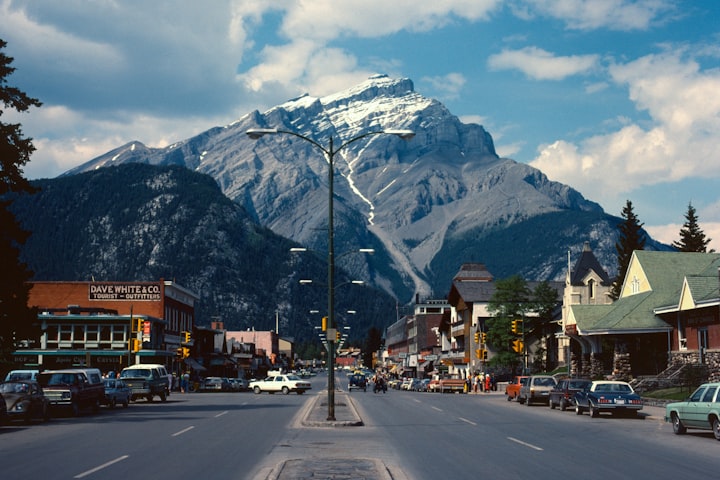Most leaders know they need to tell more stories to inform and inspire change. But they don't know what stories to tell or when to tell them. And, they often feel like they don't have any experiences worth sharing.
One of the things I do with leaders when we work together is to help them find those key experiences from their life and career (which are similar to the kind of personal stories I've been sharing over the last few months).
But there's also value in sharing the stories of others, especially stories about relatively well-known events or people like the ones below, as a way to motivate and inspire your audience.
We're wired to resist change
One of the main reasons that change is so hard is that it requires us to take a leap of faith and do something we've never done before. Which can be scary.
When you as a leader ask people to do that, they think to themselves, "That sounds too hard. How do we know we can do it? Count me out. I'm going to stick with what I know and keep things the way they are."
They're not going to change simply because we tell them to.
Thanks to recent breakthroughs in neuroscience, we now know that stories can do exactly that. When people hear a story, they feel the same emotions as the people in the story.
So when you as a leader share a story about how someone just like them did something hard to achieve something new, you allow them to walk through their fears, to feel what it would be like, in a safe way. It's almost like a virtual reality experience. They get to feel the thrill and euphoria of the change journey – without taking any real risks.
Inspirational story examples
Here are some examples of inspirational stories I've come across just in the last few weeks that do a great job of allowing people to experience a change journey in a safe way.
Ozone hole
In conversation with Lance Saunders (former DDB COO and marketing expert) about the challenge of motivating climate action, he reminded me of the story of the ozone hole as a powerful example of what we can achieve collectively when we choose to.
In the early 1980s, scientists began to realize that a class of chemicals used in things like refrigerators and aerosol sprays was destroying the ozone layer. That created a real threat to people and the planet. At the time, it seemed like an impossible problem to solve.
Yet, in 1987, once we as a global society decided to take action, we were able to establish the Montreal Protocol, a treaty to phase out the production of ozone-depleting chemicals. Now the "hole" is shrinking and the Antarctic ozone layer should recover by 2040.
Model T Ford
Climate entrepreneur Shayna Rector-Bleeker told a great little story on my podcast recently, about the challenge of inspiring fleet managers to get into electric vehicles.
Don't get daunted by this. We've done this before. A hundred years ago, we had a lot of horse and buggies going around. Then this thing called the Model T Ford showed up. And people thought this was going to be fringe, you know, I'm used to figuring where's the pub and where's the place to feed my horse? Within a decade, the majority of transportation had shifted over and this incredible new infrastructure – gas stations and all of these things – had come to be that seemed impossible at the beginning. Yet it happened, and this is what we're doing again now.
Sooke community
In the District of Sooke's climate action plan, leaders tapped into well-known community success stories from recent years to inspire change. They didn't even need to tell the stories – just remind people of what they've achieved. Here's an excerpt:
Together, we've found innovative ways to build a new library, diverse housing, multi-use community spaces, new transportation corridors, trails and sidewalks, food gardens, an expanded medical centre, a new wastewater treatment plant, and millions of dollars of highway improvements.
Moon landing
When teaching leadership storytelling, I often use the story of President John F. Kennedy's moon shot speech as an example of how to tap into something that's bugging people (the Russians winning the space race) to inspire them to "buy into" a vision (putting the first man on the moon).
In his speech, Kennedy showed Americans that, if they succeeded, they wouldn't just win the space race – they'd also become the world's leaders in technology development. As the story goes, the whole nation rallied behind the audacious project. Long after the speech, when Kennedy was touring a NASA facility, he apparently stopped to chat with a janitor and asked the man what he did there. "I'm helping to put the first man on the moon, Mr. President."
The reason I love this story is that, when Kennedy gave the speech, he didn't have a plan for how they were going to win the race – but his vision of success was so compelling that Americans didn't care.
It's the vision of happily ever after that matters
Other stories you could tell to inspire social change could be about the progress we've made on issues like smoking, gay marriage, slavery, women's rights or polio. The key is to help people see that change is possible, even when the path forward isn't always known. And that they don't have to get there all in one giant leap. One step at a time can still make a difference.
If you have any questions about or examples of leadership storytelling for change, drop me a line. I'd love to hear them!





